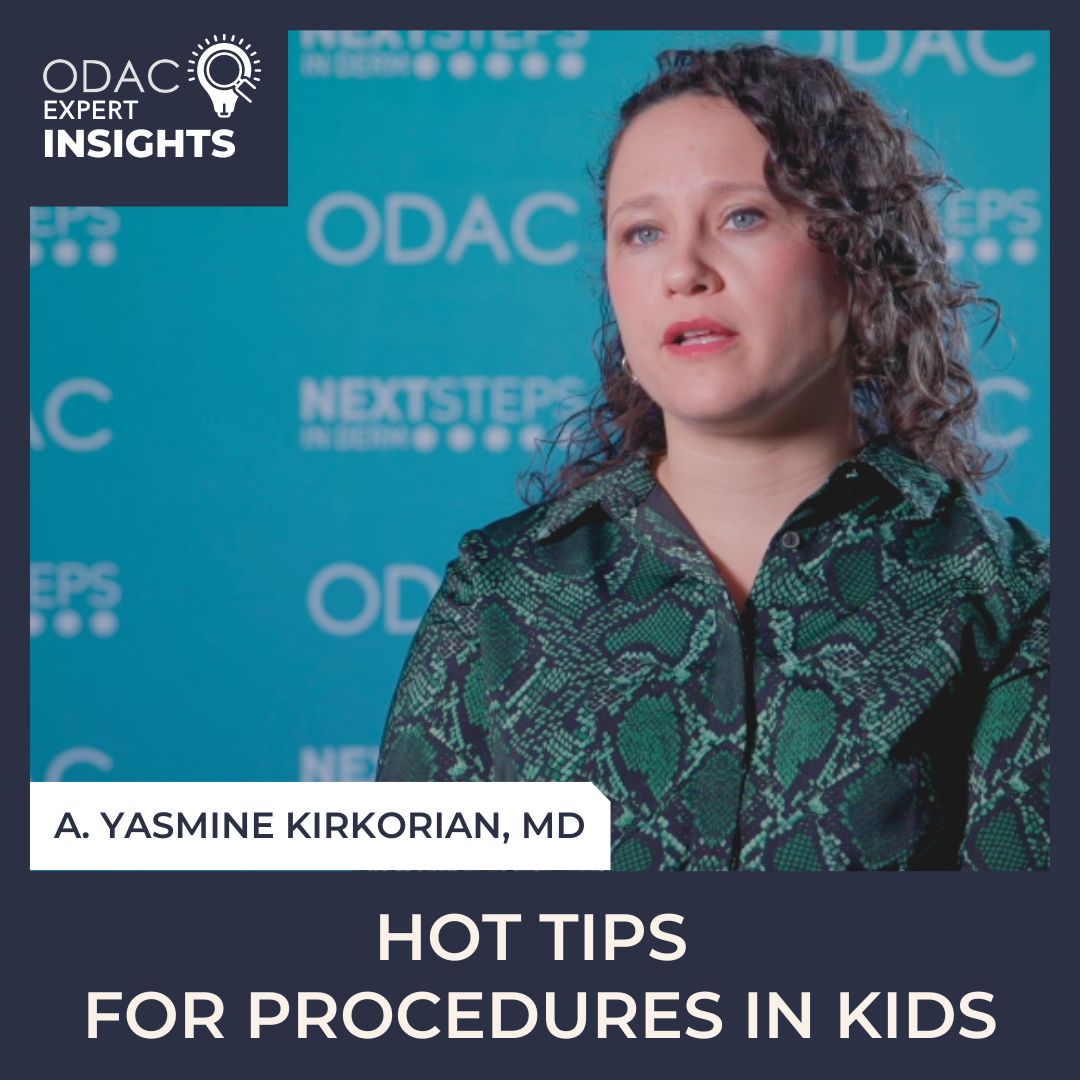Dermatologic procedures in children can be stressful for the patient, parent and the clinician. Next Steps in Derm, in partnership with ODAC Dermatology, Aesthetic & Surgical Conference, interviewed Dr. A. Yasmine Kirkorian, chief of dermatology at Children’s National Hospital. Watch as Dr. Kirkorian shares four hot tips for procedures in kids. Find out why you might want to reconsider some procedures. Hear how to involve the parent and why procedures are not a one-man job. Learn why obtaining assent is important. Plus Dr. Kirkorian shares when you might want to consider moving a procedure to the OR.
Further Reading
If you want to read more about pediatric dermatology, check out the following articles published in the Journal of Drugs in Dermatology:
Do the Words We Choose Matter When Prescribing Medications?
ABSTRACT
Background: Caregivers are often apprehensive about treating childhood atopic dermatitis (AD) with topical corticosteroids but may find comfort if treatments are presented in a patient-centered manner.
Objective: We assessed caregivers’ willingness to treat AD with either a “topical steroid,” “topical medication,” or “treatment, similar to the all-natural signals produced by the adrenal glands in the body.”
Methods: A survey randomized 874 caregivers of children with AD to receive a “topical steroid,” “topical medication,” or “treatment, similar to the all-natural signals produced by the adrenal glands in the body.” A scenario-only dataset received these descriptions, while a descriptive heading dataset and expanded scale dataset also received headings of “Topical Steroid Use,” “Topical Medication Use,” and “All-Natural Treatment Use,” respectively. Responses were recorded on a 6-point Likert scale or 0-100 slider scale. Whole and dichotomized responses were evaluated using 2-tailed, independent sample t-tests.
Results: For the descriptive heading and expanded scale datasets, those presented with a “topical medication” reported greater willingness to treat than those presented with a “topical steroid” and “all-natural treatment” in the descriptive heading dataset (P<0.05). For the dichotomized scenario-only dataset, those presented with a “treatment, similar to the all-natural signals produced by the adrenal glands in the body,” reported greater willingness than those presented with a “topical medication” (P<0.05).
Conclusion: Initially presenting caregivers with a “topical medication” rather than a “topical steroid” may improve willingness to treat AD for some caregivers. However, tailoring the discussion to best fit caregivers’ understanding of treatment may be the most beneficial approach.
Diagnosis and Management of Pediatric Psoriasis: An Overview for Pediatricians
ABSTRACT
Pediatric psoriasis (PsO) and its associated comorbidities carry physical and psychosocial burdens in children and adolescents, which can negatively impact quality of life. However, features distinguishing pediatric PsO from eczema and other common inflammatory skin diseases may not be obvious to primary care providers, which may contribute to underrecognition and misdiagnosis. Accurate diagnosis of pediatric PsO is critical for managing the physical and psychological burdens associated with this disease. This review aims to support pediatricians with enough information to confidently diagnose pediatric PsO, assess associated physical and mental health comorbidities, and recommend first-line treatment options for children with mild to moderate PsO. To accomplish this, we provide information that distinguishes the appearance and symptoms of pediatric PsO from other common pediatric skin conditions. In addition, comorbidities and some of the mental health challenges associated with pediatric PsO are reviewed to help pediatricians provide appropriate care for patients in their clinical practice.
Did you enjoy this video interview? Find more here.

